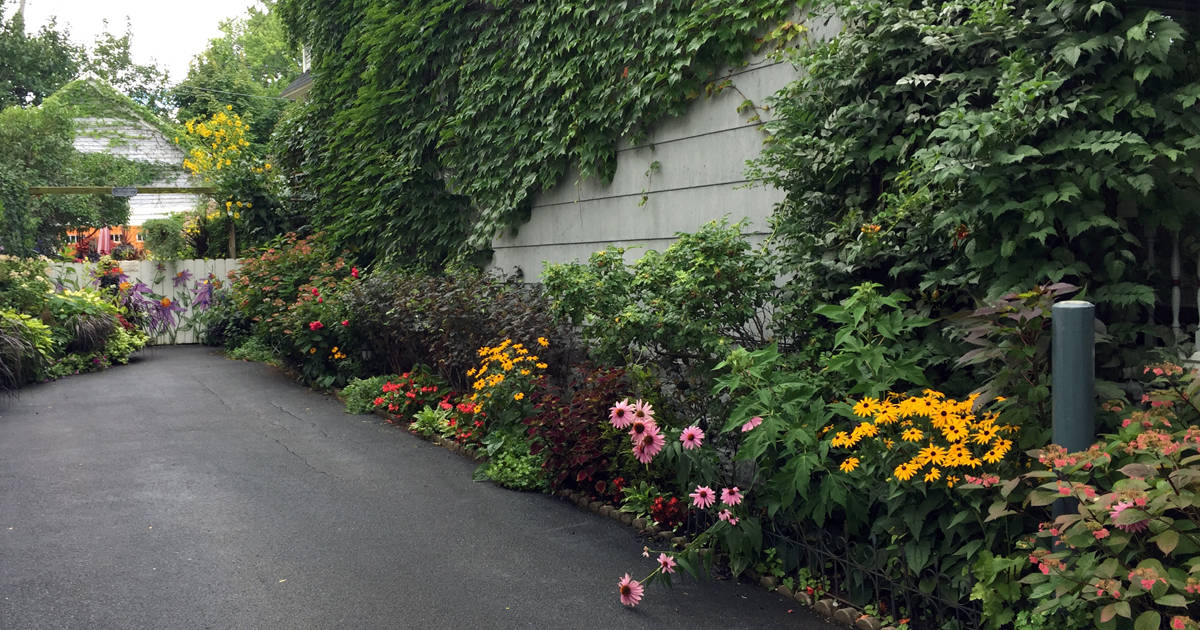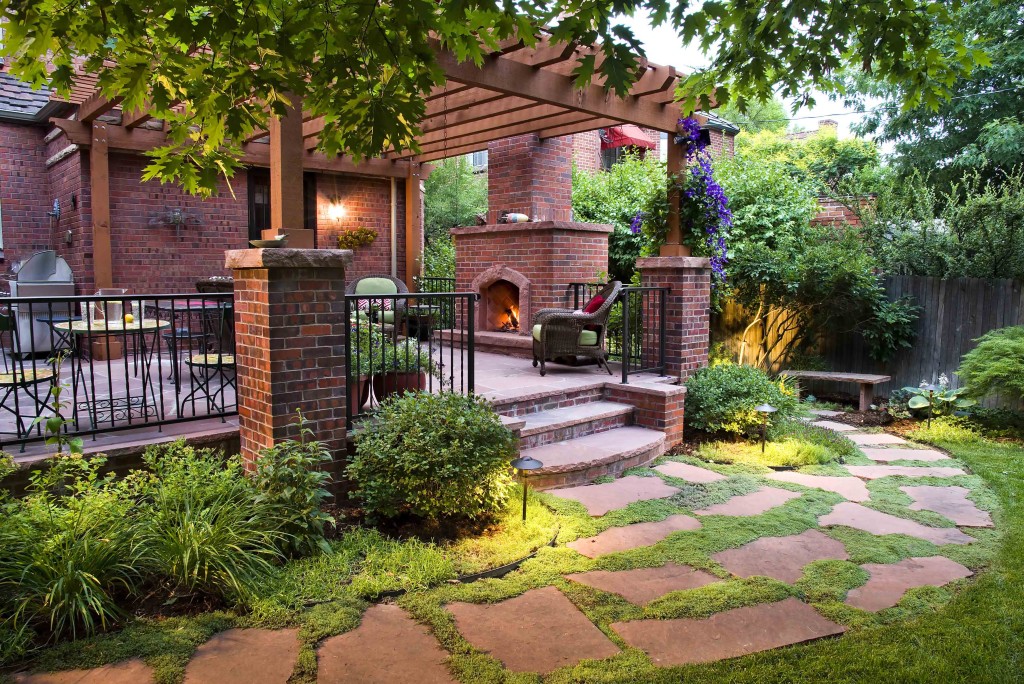The 8-Minute Rule for Hilton Head Landscapes
The 8-Minute Rule for Hilton Head Landscapes
Blog Article
Not known Facts About Hilton Head Landscapes
Table of ContentsExamine This Report on Hilton Head LandscapesAll about Hilton Head LandscapesHilton Head Landscapes for BeginnersNot known Incorrect Statements About Hilton Head Landscapes Hilton Head Landscapes Things To Know Before You Get ThisA Biased View of Hilton Head LandscapesHilton Head Landscapes Things To Know Before You Get ThisA Biased View of Hilton Head Landscapes
Kind compatibility is also a significant element of unity in designone or more strikingly different forms are great for contrast and focus, however generally all other forms must have some resemblances for an unified look. Texture refers to exactly how crude or fine the surface of the plant or hardscape product really feels and/or looks.
Examples of plants with coarse structure consist of philodendrons, agaves, bromeliads, hollies, palms, and hydrangeas. Hardscape with crude structure consists of rough-cut stone, rough-finished block, and incomplete timber with knots and a raised grain. Matured or old building material that keeps a weather-beaten surface is often coarse in appearance. Attributes that develop great appearance include small foliage; thin, strappy leaves (lawns) or high, thin stems; little, dense twigs and tiny branches; long stems (vines); and tiny, delicate flowers.
The Ultimate Guide To Hilton Head Landscapes
Most plants are medium texture, in that they can not be described as having either coarse or fine structure. Medium-textured plants act as a history to web link and link the rugged- and fine-textured plants.

To make a space feel smaller, position the coarse textures along the outer boundary and the great structures closest to the visitor. The detail of the coarse appearance makes the plants show up closer and makes the area really feel smaller. The perceived appearance of plants can likewise alter with the range from the plant.
All About Hilton Head Landscapes
Vibrant shades enhance the comparison and make the texture show up coarser, while muted colors can squash texture. Hardscape with a crude texturesuch as very harsh rocks and vibrant, large timberstends to make all plant material show up more moderate textured. Developers typically create a texture study (Number 8) theoretically to aid make a decision the plan of plant materials.
Figure 8. Texture research. Shade in plant product and hardscape includes interest and selection to the landscape. Shade is one of the most conspicuous aspect in the landscape and is usually the focus of the majority of property owners; however, it is additionally one of the most short-term element, normally lasting just a few weeks a year for individual plants.
6 Simple Techniques For Hilton Head Landscapes
A straightforward summary of the color wheel consists of the 3 primaries of red, blue, and yellow; the 3 secondary shades (a mix of two primaries) of green, orange, and violet; and 6 tertiary colors (a mix of one nearby main and second color), such as red-orange. Shade concept explains the relationship of colors to each other and exactly how they must be utilized in a make-up.

Analogous (occasionally called unified) color design are any type of three to five colors that are adjacent on the color wheel, such as red, red-orange, orange, yellow-orange, and yellow, or blue, blue-violet, and violet (Landscapers near me). The colors relate to every other due to the fact that they normally include 2 primaries blended to form a second and two tertiary shades, which means they share typical homes
They tend to have high contrast between them. The most usual collections are violet and yellow, red and environment-friendly, and blue and orange. Corresponding shades are usually found normally in blossoms; a common set is yellow and violet. Shade is found in the blossoms, foliage, bark, and fruit of plants.
Hilton Head Landscapes Can Be Fun For Anyone
Environment-friendly vegetation in all its various shades is the dominant shade by quantity, however various other colors record interest quicker due to their high contrast to the color green. Color is also found in structures, rocks, pavers, wood, and furniture. A lot of shades in natural materials, such as stone and wood, are normally muted and tend to be variations of brown, tan, and light yellow.
Colors have residential or commercial properties that can influence emotions, spatial assumption, light high quality, balance, and focus. Trendy shades have a tendency to be calming and should be made use of in locations for relaxation and serenity.
How Hilton Head Landscapes can Save You Time, Stress, and Money.
The "temperature" of shades can likewise influence the understanding of range. Trendy colors tend to decline and are regarded as being further away, making a space really feel larger. Cozy colors often tend to advance and are perceived as being better, making a room really feel smaller sized. Color can additionally be utilized to catch focus and direct sights.
As an example, intense yellow, which has the highest possible strength, additionally has a high contrast with all other shades (often called a "pop" of shade) and need to be conserved. A percentage of extreme color has as much visual weight as a big quantity of a more controlled or weaker color.
Comparable (often called unified) color design are any type of 3 to five colors that are surrounding on the shade wheel, such as red, red-orange, orange, yellow-orange, and yellow, or blue, blue-violet, and violet. The colors belong to each other because they generally include 2 primary colors blended to form an additional and two tertiary colors, which indicates they share usual buildings.
All About Hilton Head Landscapes
Complementary shades are typically found naturally in blossoms; an usual set is yellow and violet. Color is discovered in the flowers, vegetation, bark, and fruit of plants.
Environment-friendly vegetation in all its various tones is the dominant shade by quantity, however various other shades capture interest much more readily due to the fact that of their high comparison to the shade eco-friendly - landscapers in bluffton sc - https://www.blogtalkradio.com/stevenagonzales. Color is likewise located in structures, rocks, pavers, timber, and furniture. A lot of shades in natural products, such as stone and wood, are normally low-key and tend to be variants of brown, tan, and pale yellow
The smart Trick of Hilton Head Landscapes That Nobody is Discussing
Shades have residential or commercial properties that can influence emotions, spatial assumption, light quality, balance, and focus. Awesome shades often tend to be soothing and ought to be used in locations for relaxation and serenity.
The "temperature level" of colors can likewise affect the understanding of range. Cool shades have a tendency to recede and are regarded as being further away, making an area feel larger. Cozy shades have a tendency to advance and are regarded as being closer, making a space feel smaller. Shade can likewise be made use of to capture interest and direct sights.
Brilliant yellow, which has the highest strength, have a peek at this site additionally has a high contrast with all various other colors (often described as a "pop" of shade) and should be made use of sparingly. A little amount of extreme shade has as much visual weight as a large quantity of a more subdued or weak shade.
Report this page